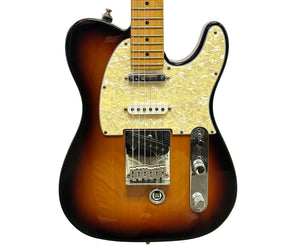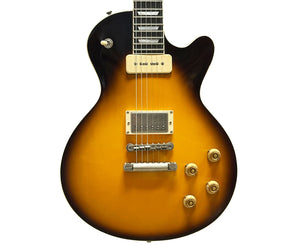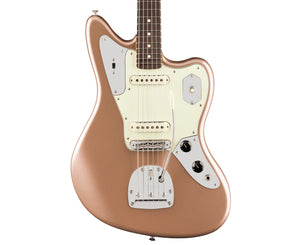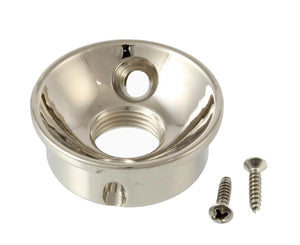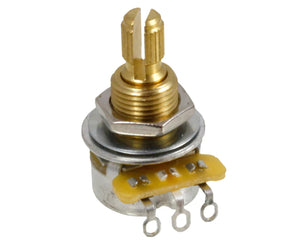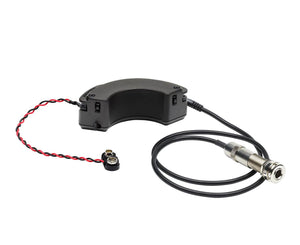{"id":8926660362473,"title":"Electro-Harmonix V1 Micro Synthesizer Guitar Effects Pedal 1979","handle":"electro-harmonix-v1-micro-synthesizer-guitar-effects-pedal-1979","description":"\u003cp\u003e\u003cstrong\u003e\u003cspan style=\"font-family: Calibri, sans-serif;\" face=\"Calibri, sans-serif\"\u003eThis \u003c\/span\u003e\u003cspan style=\"font-family: Calibri, sans-serif;\"\u003eexcerpt was taken from Catalinbread Effects. It's very thorough and explains a lot.\u003c\/span\u003e\u003c\/strong\u003e\u003c\/p\u003e\n\u003cp class=\"p2\"\u003eWith real synthesizer controls, the Micro Synthesizer lived up to its name and then some. Players were given full, expansive control over every parameter of the filter sweep and other synth fixings, including triggering parameters and some rudimentary ADSR functions. You can completely cut out the dry signal if you want to go full Edgar Winter, or keep it present for a full-bodied tone. There are two separate octave mix controls, which the manual describes as having extra “harmonic distortion.” A feature, not a flaw, you see.\u003c\/p\u003e\n\u003cp class=\"p2\"\u003eFor being so feature-rich, the manual does not mince words about the degree of difficulty attached to wrangling the Micro Synthesizer. Each slider function is delineated in great detail, including how they interact with the other sliders. With that said, it’s very easy to make the Micro Synthesizer sound . . . interesting (but never bad), but dialing it in is a task in itself. And since this particular model is so rare to find with the manual, there is one particular parameter that is capable of throwing the whole system into peril.\u003c\/p\u003e\n\u003cp\u003e\u003cmeta charset=\"UTF-8\"\u003e\u003cspan\u003eIt is explicitly stated in the documentation that the Micro Synthesizer is factory tuned to support the output from a Strat. As some Strat aficionados know, Strat pickups made in the late-’70s were somewhat undesirable—in the canon of Strat pickups, these are known as relatively thin and microphonic sounding. As such, the Micro Synthesizer is factory-set to accept and process wimpy pickups. Players equipped with a little more magnetic beef must open the enclosure and fiddle with a trimpot, while futzing with a semi-complicated calibration procedure involving all ten sliders.\u003c\/span\u003e\u003c\/p\u003e\n\u003cp class=\"p2\"\u003eThe manual promises “popular lead synthesizer voicings,” and it’s fair to say that Mike Matthews and company hit the nail on the head. There’s just one problem: the oscillator. In the realm of synth, an oscillator is the sound source, which can be tuned, adjusted and then processed through a network of outboard operations before it reaches the output jack. The analog (har har) to guitar would be the strings. And because the guitar is a much more harmonically complicated sound source than any oscillator, it is notoriously difficult to pipe into the same synth outrigging and expect the same results.\u003c\/p\u003e\n\u003cp class=\"p2\"\u003eTo get around this, the Micro Synthesizer employs a pulverizing fuzz circuit that amplifies the incoming signal to a near-vertical amplitude, then shears off the peaks to fashion a crude square wave. Problem solved. This soothes the innards of the unit and allows it to work its magic without glitching out; the boon of almost every analog synth pedal ever created.\u003c\/p\u003e\n\u003cp class=\"p2\"\u003eAs a testament to the pedal’s longevity and the simultaneous secret desire of guitarists to tickle the ivories without having to learn a whole new instrument, the Micro Synthesizer is still being made today, a full 42 years later, with only a couple teensy changes. Even though synths can now do basically everything, including MIDI, there’s something to be said for the basics.\u003c\/p\u003e\n\u003cp\u003e\u003cstrong\u003e\u003cspan face=\"Calibri, sans-serif\"\u003e\u003cspan\u003e\u003cspan style=\"font-family: Calibri, sans-serif;\"\u003eCondition: \u003c\/span\u003e\u003c\/span\u003e\u003c\/span\u003e\u003c\/strong\u003e\u003cspan face=\"Calibri, sans-serif\"\u003e\u003cspan style=\"font-family: Calibri, sans-serif;\"\u003eExcellent, this is the Non-Domestic version which makes it ever more rare, It was made for the European market. However I have changed out the power cable so it works with standard 110v-120v for USA power. It does have some minor scratches. It's sounds great and works great. It's really an expressive pedal.\u003c\/span\u003e\u003c\/span\u003e\u003c\/p\u003e\n\u003cp\u003e\u003cspan face=\"Calibri, sans-serif\"\u003e\u003cspan style=\"font-family: Calibri, sans-serif;\"\u003eThis is a link with Peter Stroud demoing the pedal. https:\/\/youtu.be\/kFaSZnJeBWY?si=58KA7P2-O4yBLqly \u003c\/span\u003e\u003c\/span\u003e\u003c\/p\u003e","published_at":"2025-04-30T22:54:22-04:00","created_at":"2025-04-30T22:20:09-04:00","vendor":"Electro-Harmonix","type":"Synth","tags":["1979 V1 Micro Synthesizer","Effects","Electro-Harmonix","Electro-Harmonix V1 Micro Synthesizer","Filter Pedal","Guitar Effects","Guitar Pedals","Micro Synthesizer V1","reverbsync-condition:excellent","Synth Pedal","Used","Vintage","Vintage Collection","Vintage Effects","Vintage Synth"],"price":62999,"price_min":62999,"price_max":62999,"available":true,"price_varies":false,"compare_at_price":79999,"compare_at_price_min":79999,"compare_at_price_max":79999,"compare_at_price_varies":false,"variants":[{"id":48370885820649,"title":"Default Title","option1":"Default Title","option2":null,"option3":null,"sku":"EHX-V1-Micro-Synthesizer-1979","requires_shipping":true,"taxable":true,"featured_image":null,"available":true,"name":"Electro-Harmonix V1 Micro Synthesizer Guitar Effects Pedal 1979","public_title":null,"options":["Default Title"],"price":62999,"weight":1361,"compare_at_price":79999,"inventory_quantity":1,"inventory_management":"shopify","inventory_policy":"deny","barcode":null,"requires_selling_plan":false,"selling_plan_allocations":[]}],"images":["\/\/megatonemusic.com\/cdn\/shop\/files\/Electro-Harmonix-Vintage-V1-Micro-Synthesizer-1979-Image-1.jpg?v=1746067195","\/\/megatonemusic.com\/cdn\/shop\/files\/Electro-Harmonix-Vintage-V1-Micro-Synthesizer-1979-Image-2.jpg?v=1746067195","\/\/megatonemusic.com\/cdn\/shop\/files\/Electro-Harmonix-Vintage-V1-Micro-Synthesizer-1979-Image-3.jpg?v=1746067195","\/\/megatonemusic.com\/cdn\/shop\/files\/Electro-Harmonix-Vintage-V1-Micro-Synthesizer-1979-Image-4.jpg?v=1746067195","\/\/megatonemusic.com\/cdn\/shop\/files\/Electro-Harmonix-Vintage-V1-Micro-Synthesizer-1979-Image-5.jpg?v=1746067195","\/\/megatonemusic.com\/cdn\/shop\/files\/Electro-Harmonix-Vintage-V1-Micro-Synthesizer-1979-Image-6.jpg?v=1746067195"],"featured_image":"\/\/megatonemusic.com\/cdn\/shop\/files\/Electro-Harmonix-Vintage-V1-Micro-Synthesizer-1979-Image-1.jpg?v=1746067195","options":["Title"],"media":[{"alt":null,"id":37024562479337,"position":1,"preview_image":{"aspect_ratio":1.226,"height":1142,"width":1400,"src":"\/\/megatonemusic.com\/cdn\/shop\/files\/Electro-Harmonix-Vintage-V1-Micro-Synthesizer-1979-Image-1.jpg?v=1746067195"},"aspect_ratio":1.226,"height":1142,"media_type":"image","src":"\/\/megatonemusic.com\/cdn\/shop\/files\/Electro-Harmonix-Vintage-V1-Micro-Synthesizer-1979-Image-1.jpg?v=1746067195","width":1400},{"alt":null,"id":37024562512105,"position":2,"preview_image":{"aspect_ratio":1.226,"height":1142,"width":1400,"src":"\/\/megatonemusic.com\/cdn\/shop\/files\/Electro-Harmonix-Vintage-V1-Micro-Synthesizer-1979-Image-2.jpg?v=1746067195"},"aspect_ratio":1.226,"height":1142,"media_type":"image","src":"\/\/megatonemusic.com\/cdn\/shop\/files\/Electro-Harmonix-Vintage-V1-Micro-Synthesizer-1979-Image-2.jpg?v=1746067195","width":1400},{"alt":null,"id":37024562544873,"position":3,"preview_image":{"aspect_ratio":1.226,"height":1142,"width":1400,"src":"\/\/megatonemusic.com\/cdn\/shop\/files\/Electro-Harmonix-Vintage-V1-Micro-Synthesizer-1979-Image-3.jpg?v=1746067195"},"aspect_ratio":1.226,"height":1142,"media_type":"image","src":"\/\/megatonemusic.com\/cdn\/shop\/files\/Electro-Harmonix-Vintage-V1-Micro-Synthesizer-1979-Image-3.jpg?v=1746067195","width":1400},{"alt":null,"id":37024562577641,"position":4,"preview_image":{"aspect_ratio":1.226,"height":1142,"width":1400,"src":"\/\/megatonemusic.com\/cdn\/shop\/files\/Electro-Harmonix-Vintage-V1-Micro-Synthesizer-1979-Image-4.jpg?v=1746067195"},"aspect_ratio":1.226,"height":1142,"media_type":"image","src":"\/\/megatonemusic.com\/cdn\/shop\/files\/Electro-Harmonix-Vintage-V1-Micro-Synthesizer-1979-Image-4.jpg?v=1746067195","width":1400},{"alt":null,"id":37024562610409,"position":5,"preview_image":{"aspect_ratio":1.226,"height":1142,"width":1400,"src":"\/\/megatonemusic.com\/cdn\/shop\/files\/Electro-Harmonix-Vintage-V1-Micro-Synthesizer-1979-Image-5.jpg?v=1746067195"},"aspect_ratio":1.226,"height":1142,"media_type":"image","src":"\/\/megatonemusic.com\/cdn\/shop\/files\/Electro-Harmonix-Vintage-V1-Micro-Synthesizer-1979-Image-5.jpg?v=1746067195","width":1400},{"alt":null,"id":37024562643177,"position":6,"preview_image":{"aspect_ratio":1.226,"height":1142,"width":1400,"src":"\/\/megatonemusic.com\/cdn\/shop\/files\/Electro-Harmonix-Vintage-V1-Micro-Synthesizer-1979-Image-6.jpg?v=1746067195"},"aspect_ratio":1.226,"height":1142,"media_type":"image","src":"\/\/megatonemusic.com\/cdn\/shop\/files\/Electro-Harmonix-Vintage-V1-Micro-Synthesizer-1979-Image-6.jpg?v=1746067195","width":1400}],"requires_selling_plan":false,"selling_plan_groups":[],"content":"\u003cp\u003e\u003cstrong\u003e\u003cspan style=\"font-family: Calibri, sans-serif;\" face=\"Calibri, sans-serif\"\u003eThis \u003c\/span\u003e\u003cspan style=\"font-family: Calibri, sans-serif;\"\u003eexcerpt was taken from Catalinbread Effects. It's very thorough and explains a lot.\u003c\/span\u003e\u003c\/strong\u003e\u003c\/p\u003e\n\u003cp class=\"p2\"\u003eWith real synthesizer controls, the Micro Synthesizer lived up to its name and then some. Players were given full, expansive control over every parameter of the filter sweep and other synth fixings, including triggering parameters and some rudimentary ADSR functions. You can completely cut out the dry signal if you want to go full Edgar Winter, or keep it present for a full-bodied tone. There are two separate octave mix controls, which the manual describes as having extra “harmonic distortion.” A feature, not a flaw, you see.\u003c\/p\u003e\n\u003cp class=\"p2\"\u003eFor being so feature-rich, the manual does not mince words about the degree of difficulty attached to wrangling the Micro Synthesizer. Each slider function is delineated in great detail, including how they interact with the other sliders. With that said, it’s very easy to make the Micro Synthesizer sound . . . interesting (but never bad), but dialing it in is a task in itself. And since this particular model is so rare to find with the manual, there is one particular parameter that is capable of throwing the whole system into peril.\u003c\/p\u003e\n\u003cp\u003e\u003cmeta charset=\"UTF-8\"\u003e\u003cspan\u003eIt is explicitly stated in the documentation that the Micro Synthesizer is factory tuned to support the output from a Strat. As some Strat aficionados know, Strat pickups made in the late-’70s were somewhat undesirable—in the canon of Strat pickups, these are known as relatively thin and microphonic sounding. As such, the Micro Synthesizer is factory-set to accept and process wimpy pickups. Players equipped with a little more magnetic beef must open the enclosure and fiddle with a trimpot, while futzing with a semi-complicated calibration procedure involving all ten sliders.\u003c\/span\u003e\u003c\/p\u003e\n\u003cp class=\"p2\"\u003eThe manual promises “popular lead synthesizer voicings,” and it’s fair to say that Mike Matthews and company hit the nail on the head. There’s just one problem: the oscillator. In the realm of synth, an oscillator is the sound source, which can be tuned, adjusted and then processed through a network of outboard operations before it reaches the output jack. The analog (har har) to guitar would be the strings. And because the guitar is a much more harmonically complicated sound source than any oscillator, it is notoriously difficult to pipe into the same synth outrigging and expect the same results.\u003c\/p\u003e\n\u003cp class=\"p2\"\u003eTo get around this, the Micro Synthesizer employs a pulverizing fuzz circuit that amplifies the incoming signal to a near-vertical amplitude, then shears off the peaks to fashion a crude square wave. Problem solved. This soothes the innards of the unit and allows it to work its magic without glitching out; the boon of almost every analog synth pedal ever created.\u003c\/p\u003e\n\u003cp class=\"p2\"\u003eAs a testament to the pedal’s longevity and the simultaneous secret desire of guitarists to tickle the ivories without having to learn a whole new instrument, the Micro Synthesizer is still being made today, a full 42 years later, with only a couple teensy changes. Even though synths can now do basically everything, including MIDI, there’s something to be said for the basics.\u003c\/p\u003e\n\u003cp\u003e\u003cstrong\u003e\u003cspan face=\"Calibri, sans-serif\"\u003e\u003cspan\u003e\u003cspan style=\"font-family: Calibri, sans-serif;\"\u003eCondition: \u003c\/span\u003e\u003c\/span\u003e\u003c\/span\u003e\u003c\/strong\u003e\u003cspan face=\"Calibri, sans-serif\"\u003e\u003cspan style=\"font-family: Calibri, sans-serif;\"\u003eExcellent, this is the Non-Domestic version which makes it ever more rare, It was made for the European market. However I have changed out the power cable so it works with standard 110v-120v for USA power. It does have some minor scratches. It's sounds great and works great. It's really an expressive pedal.\u003c\/span\u003e\u003c\/span\u003e\u003c\/p\u003e\n\u003cp\u003e\u003cspan face=\"Calibri, sans-serif\"\u003e\u003cspan style=\"font-family: Calibri, sans-serif;\"\u003eThis is a link with Peter Stroud demoing the pedal. https:\/\/youtu.be\/kFaSZnJeBWY?si=58KA7P2-O4yBLqly \u003c\/span\u003e\u003c\/span\u003e\u003c\/p\u003e"}








